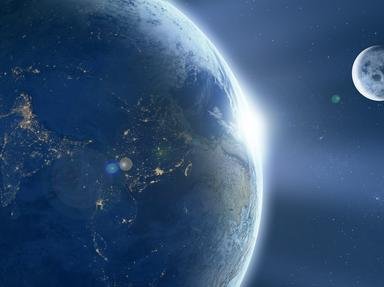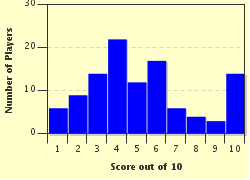Quiz Answer Key and Fun Facts
1. Everyone has seen Earth's own moon, simply named the Moon. Which of these is not a "sea" on the Moon?
2. One of these moons was originally called "the fourth star of Louis". Which one?
3. The moon Titan is unique in the fact that it has an atmosphere. In fact, its atmosphere is thicker than Earth's! This even allows for a liquid form of what substance to exist?
4. This moon is one of the most popular places for astronomers to hypothesize extraterrestrial life, due to its repeatedly being compressed and stretched by the planet it orbits.
5. What is the most prominent feature on Saturn's moon Iapetus?
6. This moon is the smallest known object discovered before the 20th century that is confirmed to be gravitationally rounded. What is it called?
7. The Saturnian moon Tethys was first imaged up close by what space probe?
8. Callisto is the farthest Galilean moon orbiting Jupiter.
9. The largest known moon in the Solar System is Ganymede. What does it have that no other known moon does?
10. This moon is thought to be the most volcanically active object in the Solar System.
Source: Author
jonthomas
This quiz was reviewed by FunTrivia editor
CellarDoor before going online.
Any errors found in FunTrivia content are routinely corrected through our feedback system.

